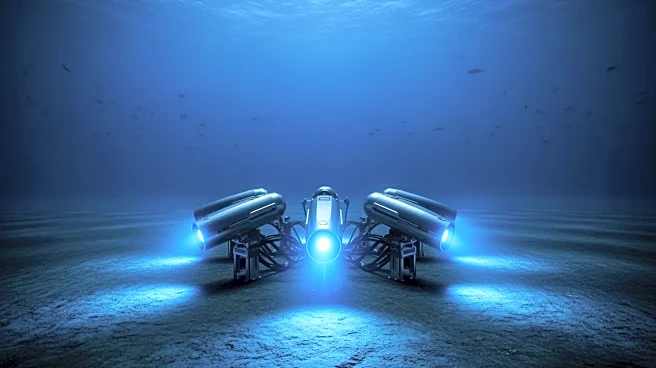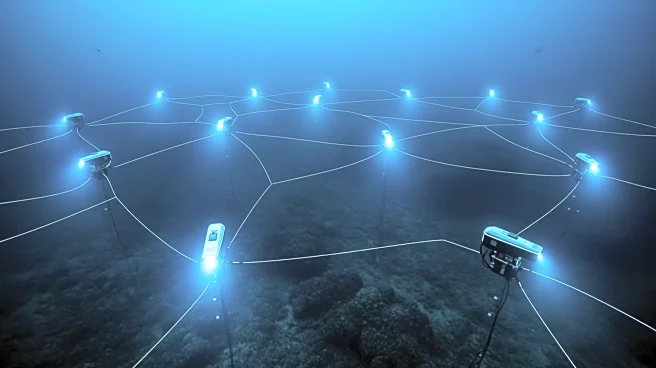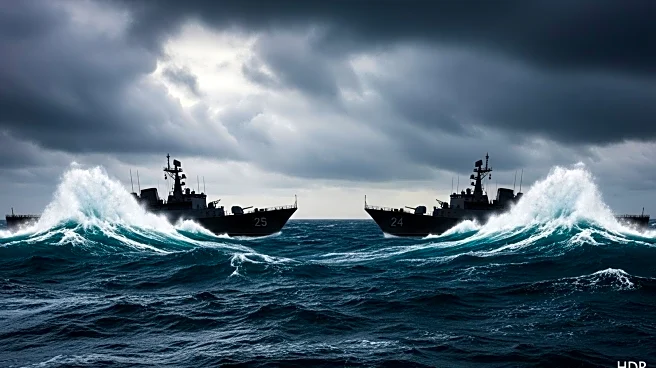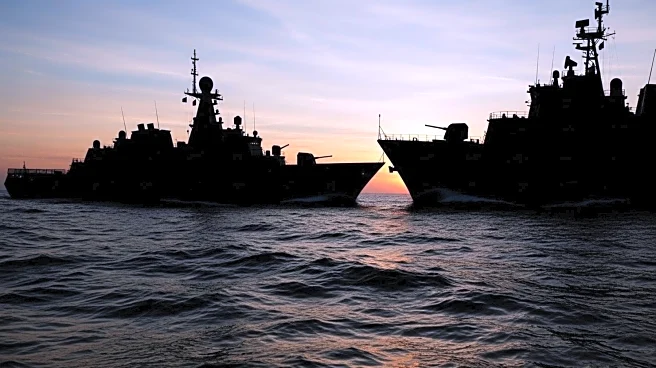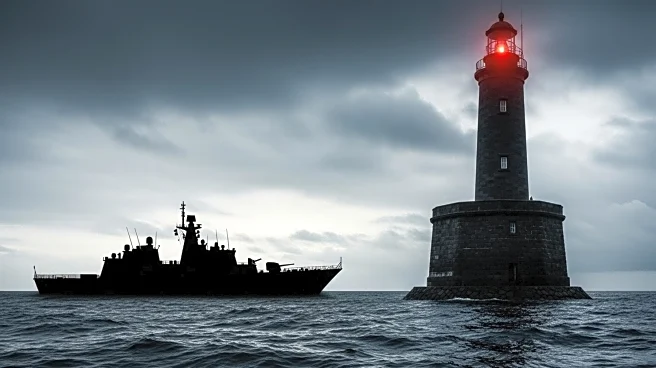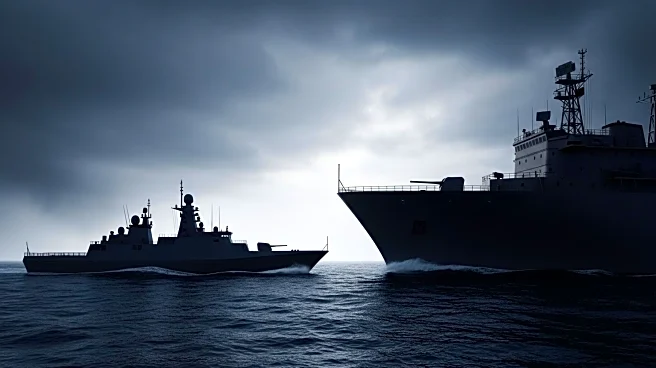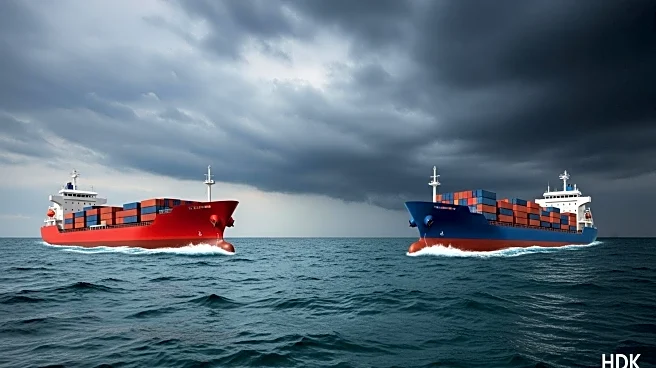What's Happening?
China is advancing its maritime surveillance capabilities through the development of a comprehensive undersea sensor network known as the Transparent Ocean strategy. This initiative aims to create a five-layer
sensor architecture spanning from the seabed to space, designed to challenge the maneuverability and concealment of U.S. and allied submarines. The network includes a constellation of satellites, smart buoys, unmanned surface vessels, deep floats, and autonomous underwater vehicles, all interconnected by undersea cables. The system is intended to provide persistent, real-time tracking across vast ocean areas, enhancing China's ability to monitor and control maritime activities.
Why It's Important?
The development of China's Transparent Ocean strategy represents a significant shift in maritime surveillance, potentially altering the balance of naval power in the Asia-Pacific region. By enhancing its ability to detect and track submarines, China could limit the operational freedom of U.S. and allied naval forces, complicating intelligence and reconnaissance missions. This advancement may also impact strategic military planning and necessitate new countermeasures from the U.S. and its allies. The increased surveillance capability could lead to heightened tensions in contested waters, such as the South China Sea, and influence geopolitical dynamics in the region.
What's Next?
The U.S. and its allies are likely to respond to China's advancements by developing counter-sensing and counter-UUV operations. This may involve new tactics and technologies to disrupt or defeat China's sensor network, including deception, jamming, and kinetic means. Collaborative efforts with regional partners, such as Australia and Japan, could strengthen command and control capabilities and enhance counter-surveillance measures. Joint exercises and trials may be conducted to improve interoperability and readiness in response to China's growing maritime capabilities.
Beyond the Headlines
China's Transparent Ocean strategy highlights the integration of civil-military fusion efforts, with advancements in sensor technology and autonomous vehicles. This development underscores the importance of technological innovation in modern warfare and the strategic value of maritime surveillance. The initiative may also prompt ethical and legal discussions regarding the use of autonomous systems in military operations and the implications for international maritime law.
